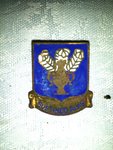Hey all,
I found parts of an aircraft with part numbers but I can't find the aircraft type or something about the function of the parts. It should be an American Aircraft. Do you help me?
Thanks in advance.
first part: It's a sort of gear with the part number GM749-647(what is the function?)
second part: W21-93972
third part: 75-5127-410
fourth part: It's a little block of steel with a bevel on a side(what is the function?)
I found parts of an aircraft with part numbers but I can't find the aircraft type or something about the function of the parts. It should be an American Aircraft. Do you help me?
Thanks in advance.
first part: It's a sort of gear with the part number GM749-647(what is the function?)
second part: W21-93972
third part: 75-5127-410
fourth part: It's a little block of steel with a bevel on a side(what is the function?)






















